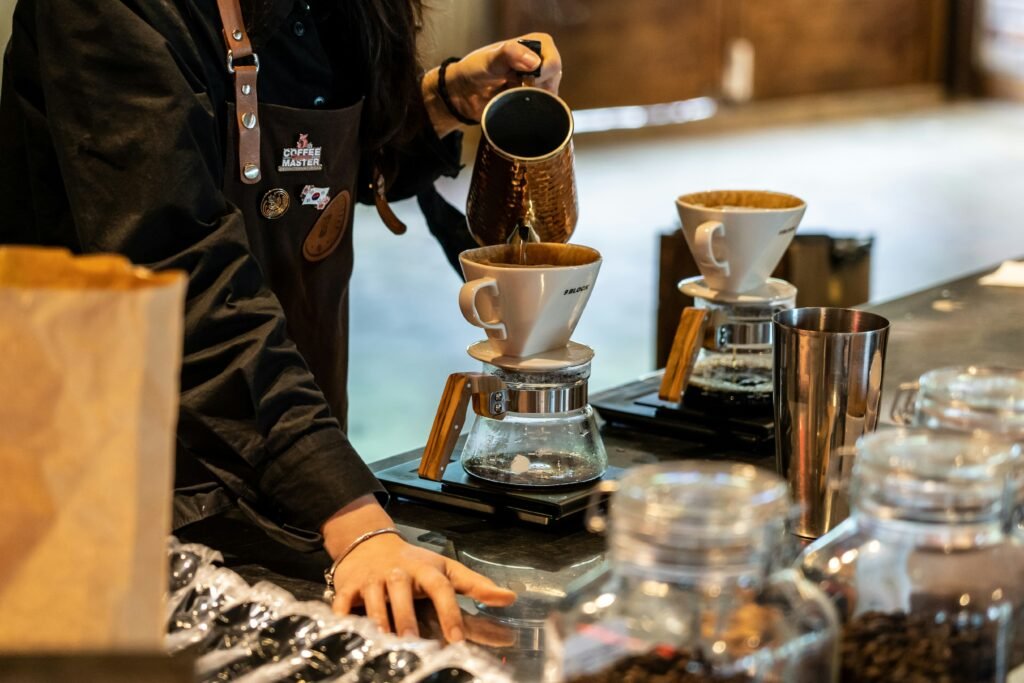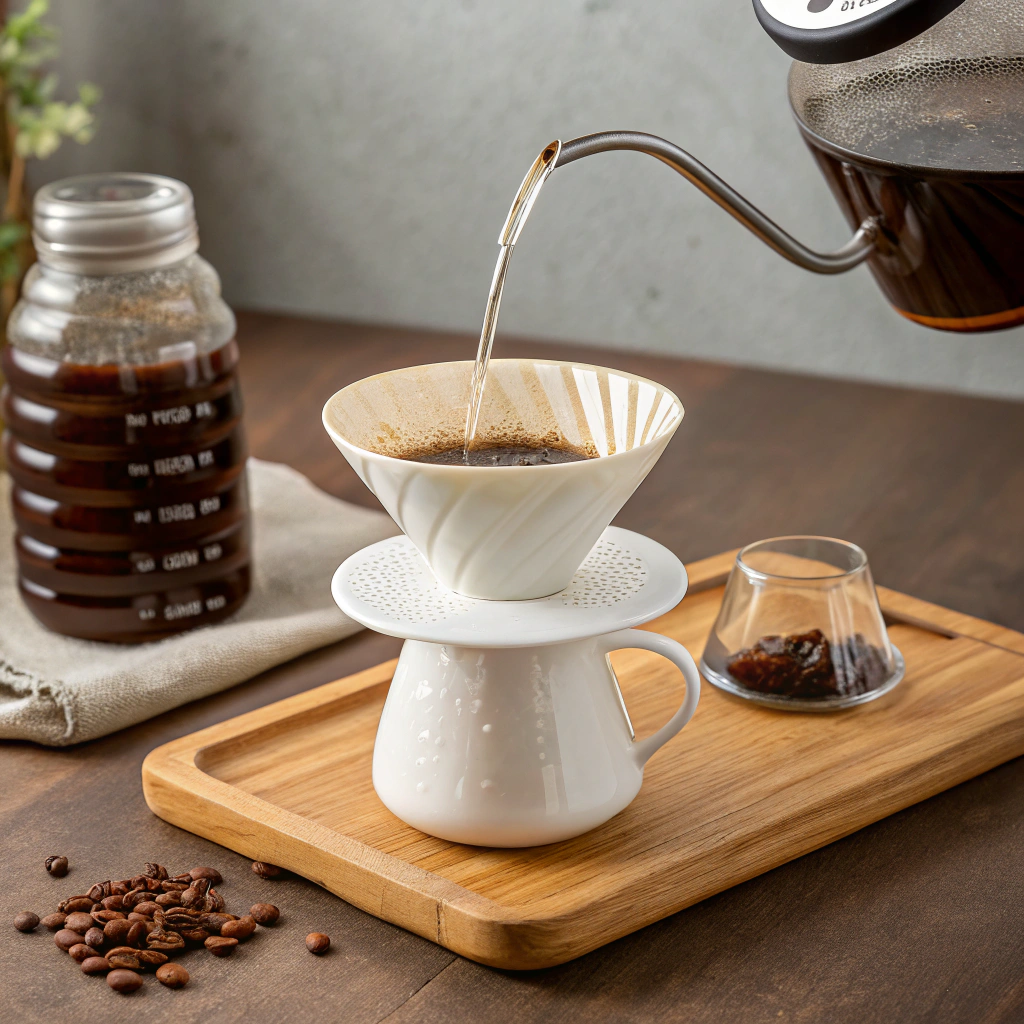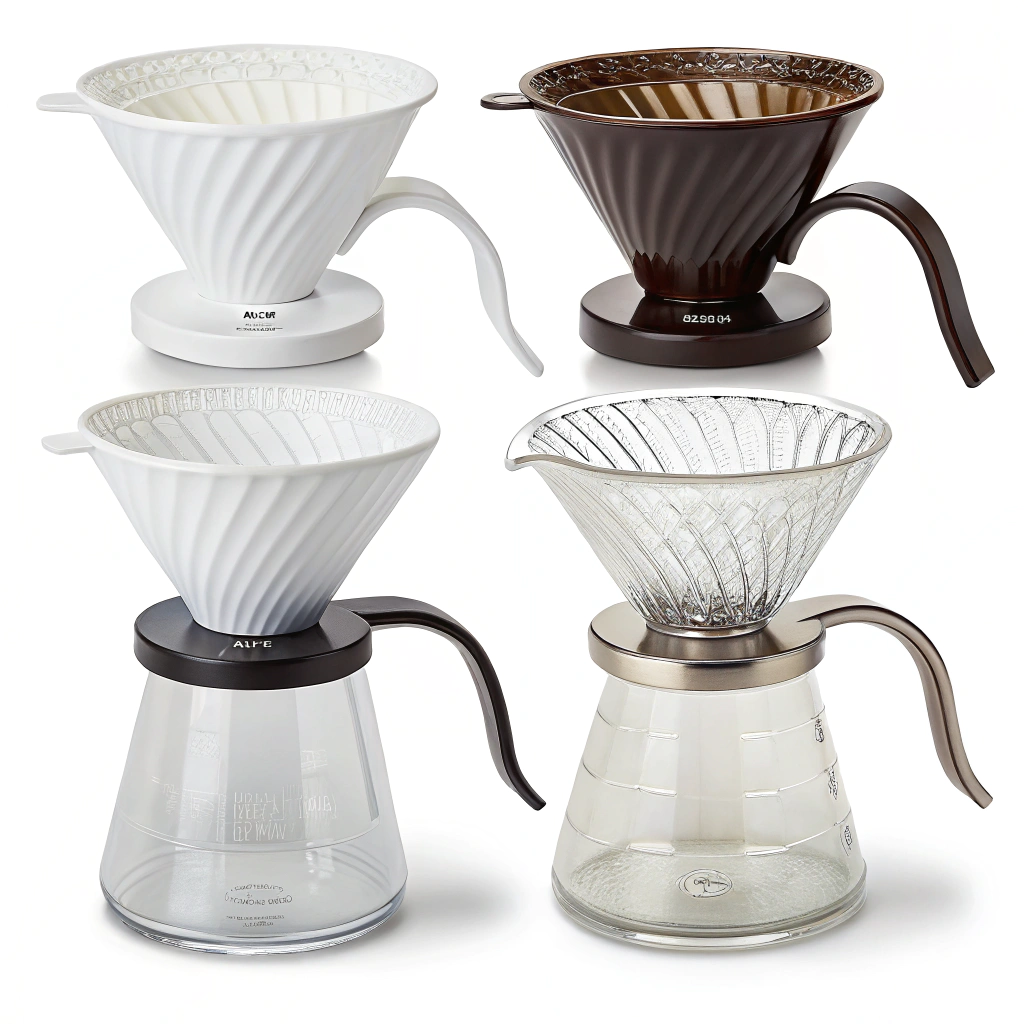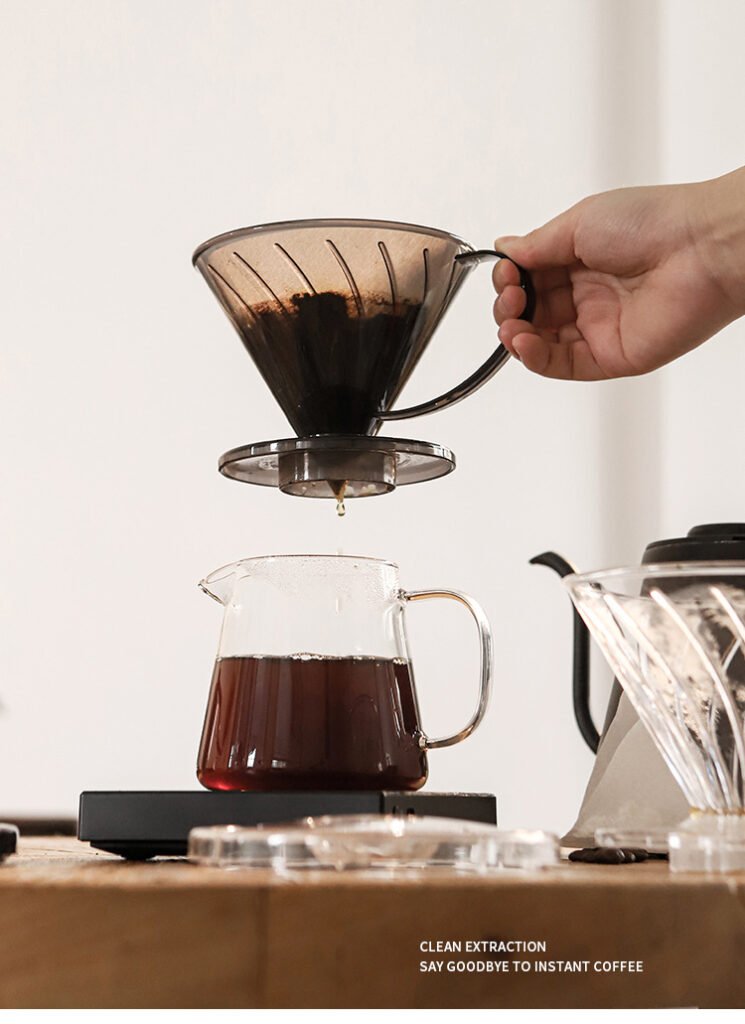Struggling to achieve that perfect cup of pour-over coffee? Most home brewers miss crucial technique details, leaving them with flat, underwhelming results. The V60 dripper might be your answer.
The V60 drip method can indeed be the secret to perfect pour-over coffee. Its 60° cone angle, spiral ribs, and large single hole allow for precise extraction control, highlighting coffee's acidity and sweetness while minimizing bitterness when used correctly.

As a coffee accessory manufacturer, I've seen countless brewing methods come and go, but the V60 has maintained its reputation among specialty coffee enthusiasts for good reason. Let's dive into what makes this brewing method so special and how you can master it to elevate your coffee experience.
How Does the V60's Unique Design Impact Coffee Flavor?
Frustrated by coffee that tastes flat or overly bitter? Many brewers don't realize how much impact brewing equipment design has on extraction dynamics and resulting flavors.
The V60's design directly influences coffee flavor through its 60° conical shape, spiral ribs, and large single hole that together create a unique extraction environment promoting clarity and highlighting distinct flavor notes in your coffee.

The Science Behind V60's Extraction
The V60's thoughtful design elements work together to create a brewing environment unlike any other pour-over method. The 60-degree angle creates an optimal balance between flow rate and contact time, while the spiral ribs serve a critical function beyond aesthetics.
These spiral ridges prevent the paper filter from clinging to the cone sides, creating air channels that allow for even water distribution throughout the coffee bed. This design feature ensures consistent flow rates from all sides, not just the bottom, while also enabling proper degassing during the bloom phase and more uniform extraction across all grounds.
The large single hole at the bottom gives the brewer significant control over extraction through pouring technique. By varying your pour speed and pattern, you can create different flavor profiles. A slow, center-focused pour produces a fuller body with higher extraction and more developed sweetness. A fast, circular pour highlights brighter acidity with a lighter body and floral notes. The pulse pouring method tends to create balanced extraction with complex flavor development.
The faster brewing time achieved by this design highlights acidity and sweetness while minimizing the chance for bitter over-extraction. This makes the V60 particularly excellent for single-origin coffees where you want to showcase distinct flavor characteristics from specific regions.
What Materials Is the V60 Available In, and How Do They Affect Brewing?
Confused about which V60 material to choose? Different materials affect heat retention, durability, and even aesthetics, making the decision more important than just looks.
The V60 comes in plastic, ceramic, glass, and metal versions, with each material offering different thermal properties that affect brewing. Ceramic and metal retain heat best for temperature stability, while plastic is most affordable and portable without sacrificing performance.

Comparing V60 Materials: Performance and Practical Considerations
The material choice for your V60 is more than an aesthetic decision – it directly impacts your brewing experience and results. Let me break down the advantages and considerations for each material option.
Ceramic offers excellent heat retention, maintaining a stable temperature throughout the brewing process. This temperature stability leads to more consistent extraction, especially beneficial for light to medium roasts where you want to highlight delicate flavors.
Heatproof glass provides good heat retention while allowing you to observe the brewing process, which can be helpful when learning technique. It has an elegant appearance but requires more careful handling than other materials.
Don't underestimate plastic models! They're most affordable, virtually unbreakable, and surprisingly good insulators. They're also lightweight and travel-friendly, plus they quickly reach brewing temperature.
Metal V60s (stainless steel/copper) offer the highest durability and excellent heat retention. Copper specifically has superior thermal conductivity, though at a premium price point.
From my experience manufacturing coffee accessories, I've found that serious home brewers often start with plastic models to master technique before investing in ceramic or metal versions as they develop their brewing ritual. Each material has its place depending on your priorities of heat retention, durability, portability, and price range.
What's the Perfect V60 Brewing Technique?
Wondering why your V60 coffee doesn't match cafe quality? The brewing technique requires precision and attention to detail that many home brewers overlook.
The perfect V60 brewing technique follows a structured approach: a 30-second bloom using twice the coffee weight in water, followed by three carefully timed pours in a spiral pattern, completing extraction within 2:30-3:00 minutes total brewing time.

Mastering the V60 Brewing Process
After years of working with coffee equipment, I've found that mastering the V60 requires understanding both the fundamentals and the fine details. Here's my recommended brewing protocol that balances simplicity with precision.
For essential equipment, you'll need a V60 dripper, V60 paper filter (rinsed thoroughly), gooseneck kettle, scale with timer, and freshly ground coffee (medium-fine consistency).
The brewing process starts with preparation. Heat water to 92-96°C (197-205°F), rinse the filter to remove paper taste and preheat the dripper, add 15-18g coffee (adjust based on desired strength), and create a flat bed of coffee in your filter.
The bloom phase (0:00-0:30) is critical. Pour twice the weight of your coffee (30-36g water), starting from the center and working outward in a spiral. Gently stir or swirl to ensure all grounds are saturated and allow gases to release for a full 30 seconds.
For the main extraction (0:30-2:30), divide your pour into three phases: First pour (0:30-1:00): Add water to reach 40% of total volume. Second pour (1:00-1:30): Add water to reach 70% of total volume. Final pour (1:30-2:00): Add remaining water to reach target volume.
For finishing (2:00-3:00), allow final drawdown to complete. Your total brew time should be between 2:30-3:00.
The key variables that most affect your results are grind size, water temperature, pour speed, and pour pattern. I've found that maintaining a consistent distance between kettle spout and coffee bed (about 2-3 inches) provides the ideal level of agitation without disturbing the coffee bed too much.
How Does the V60 Compare to Other Pour-Over Methods?
Confused by the many pour-over options available? Each method has distinct characteristics, and knowing the differences helps you choose what best matches your taste preferences.
The V60 differs from other pour-over methods through its faster flow rate and thinner filters compared to Chemex, and offers more brewing control than Kalita Wave's flat-bottom design, resulting in brighter, more nuanced cups with pronounced acidity and clarity.

Pour-Over Showdown: V60 vs. The Competition
The pour-over world offers various brewing devices, each with distinct characteristics. Understanding these differences helps coffee enthusiasts choose the right tool for their preferences. Let me compare the V60 with other popular methods based on my experience manufacturing coffee accessories.
Both V60 and Chemex are conical drippers, but key differences include filter thickness, flow rate, and learning curve. Chemex uses much thicker filters that trap more oils and fines, producing a cleaner, lighter-bodied cup. V60's thinner filters allow more oils through for a more textured mouthfeel. The V60's large single hole and spiral ribs promote faster flow than Chemex's restrictive channel, giving the brewer more control but requiring more precision. Chemex is more forgiving for beginners, while V60 rewards technique refinement with greater flavor potential.
The most significant design difference between V60 and Kalita Wave is the flat-bottom vs. conical shape. Kalita's flat bottom with multiple small holes creates a more even extraction environment with less channeling risk. Its design naturally restricts flow, creating more consistency between brews but less ability to manipulate flavor through pouring technique. V60 typically produces brighter cups with pronounced acidity, while Kalita tends toward balanced, sweet cups with medium body.
Though technically not a pour-over, the AeroPress is a common alternative. It uses immersion with pressure rather than gravity-fed percolation, has a shorter brew time (1:00-2:00 minutes versus 2:30-3:00 for V60), and produces medium to full body versus V60's light to medium body. AeroPress is extremely versatile and works with all roast levels, while V60 excels with specific coffees.
In my testing, I've found that the V60 particularly excels with light to medium roast single-origin coffees, floral and fruit-forward Ethiopian and Kenyan beans, and brewing scenarios where highlighting distinct flavor notes is the priority.
Conclusion
The V60 drip method offers unparalleled control over your pour-over coffee experience, highlighting clarity and brightness when used correctly. With its thoughtful design and proper technique, it truly can be your secret to perfect coffee.




